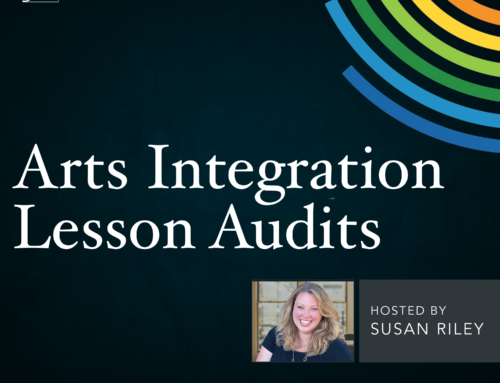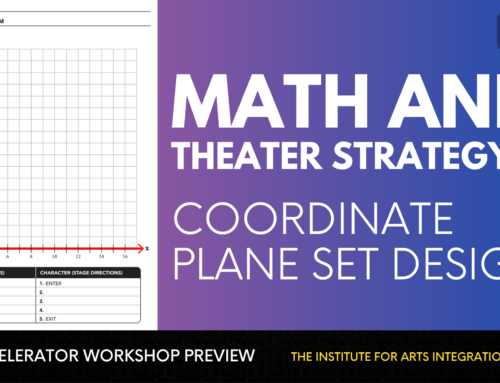It’s been a STEAMy summertime in Maryland this year!
I recently worked with four teaching artists and four classroom teachers in a wonderful summer program in our county called Imagination Vacation. In Anne Arundel County Public Schools (MD), the students at the two Performing and Visual Arts (PVA) magnet middle schools are required to participate in a summer arts camp of their choice. Some students do band camps, some do ballet camps; others choose to participate in our Imagination Vacation.
The Imagination Vacation is the result of a unique partnership between the PVA, the Arts Integration office and Young Audiences of Maryland. (Young Audiences is a non-profit organization which brings professional teaching artists and arts programs into schools.) Teaching artists, as part of a training program offered by Young Audiences, team up with selected classroom teachers from our arts integration schools.
The teams attend our county’s Summer Arts Integration Institute earlier in the summer and use this experience to guide them in creating lessons for a four-day residency focused on integrating curriculum with the arts. These residencies become the basis of Imagination Vacation experience. The teaching teams get to practice and perfect their arts integrated strategies. The students get to learn and perform new skills in four different art forms as well as make connections to content in interactive sessions with each of the artists/teacher teams.
This year, all the lessons were all variations of a STEAM lesson.
However, the common thread was engineering: each and every one of them brought the students’ attention to how they would use engineering in the arts. The students employed the engineering process (ask, imagine, plan, create and improve) along with their imaginations to create and perform their own music, dance, poetry and animations.
They participated in these four very cool and exciting STEAM sessions:
With Bomani Armah,
“not a rapper, but a poet with a hip-hop style”, the students learned how to create eight bar rhymes and developed these into songs about themselves and others. They used hip hop as a poetic form and the design process to figure out how they could express their feelings, hopes, fears and perspectives with this form. Then, they brainstormed themes and ideas about the difficulties of being middle-schoolers and identified related rhyming words with a rhyme tree organizer. The students composed multiple stanza songs by placing their words into four beat lyric charts and performed the songs for themselves and their families on the last day of the camp.
With visual artist, Rebecca Nagle Brawner,
Students produced stop motion animation by using the design process. Small groups of students selected an idea from a brainstormed list of middle school fears. Then, they imagined a story line by which they could communicate their feelings and anxieties. The groups planned and created costumes and props to accompany the story using construction paper and cardboard. Each group performed their story while capturing the sequence in up to 150 digital photos against a black backdrop. The photos combined created an animation video including a simple narration. Students presented the videos and their peers reviewed for improvement using the Praise, Question, Polish protocol.
With drummer and musician, Steve Cyphers,
Students were introduced to the basics of drumming by playing on trash cans and using PVC pipe wrapped with duck tape for drumsticks. They learned how time signatures (2/4 and 4/4) are fractions and how sound waves are created with percussion instruments. They listened as Steve played a variety of percussive instruments and drew representations of the waves they heard on paper. To create variation in the musical timbre of the songs they performed with the drums, each student used the design process to make modifications to his/her drum using a variety of found and recycled materials, such as metal washers. They used the modified instruments to create their own rhythms and performed them in a call and response format with each other.
With Hawaiian dancer, Kathleen Haller,
the students learned how traditional Hawaiians told stories through dance. They practiced the elements of dance and related these to the hand gestures and body movements typical of hula dance. And, they learned the lyrics to traditional songs and how Hawaiians accompanied these with movement. They analyzed the central ideas and themes from informational text about the history of Hawaiian dance by creating tableaux to summarize the ideas. Then, they used the design process to choreograph, improve and perform their own hula inspired dances to communicate the main idea and details of a section of the reading.






